Analysis
Unlimited Is the Most Talked-About Highlight at Art Basel in Basel
Grand gestures make big statements in this tightly curated show.
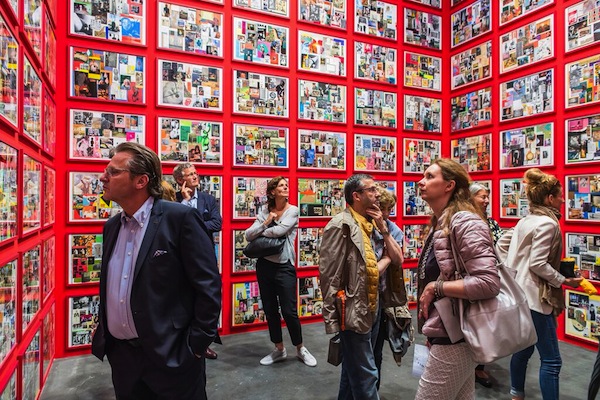
Photo: Courtesy Art Basel
Grand gestures make big statements in this tightly curated show.

Hili Perlson


Ai Weiwei, Stacked (2012), Art Basel Unlimited 2015
Photo: Courtesy Art Basel
Art Basel Unlimited—curated by Gianni Jetzer and dedicated to artworks ranging from big to outright gigantic—never fails to deliver some of the most talked-about highlights at Art Basel in Basel, and this year is no exception. But while immersive, colorful installations will always be the most Instagrammed crowd pleasers, it was the video art and the subtler, nuanced gestures that left a lasting impression.

Tal R, Garbage Man (1993-2013), Art Basel Unlimited 2015
Photo: Courtesy Art Basel
By the entrance, inside a rotating concrete bowl, German artist Julius von Bismarck is sitting at a desk. A mattress and lamp are arranged on the floor of the cupped sculpture, invoking a recluse’s cell. Except he is talking on his smartphone as the bowl spins and spins. A catalogue of the 8th Nordic Biennale, where von Bismarck is participating, is placed on the desk (see Immersive Gaming, Raves, Apps, and Tattoos Star at the 8th Nordic Biennial).
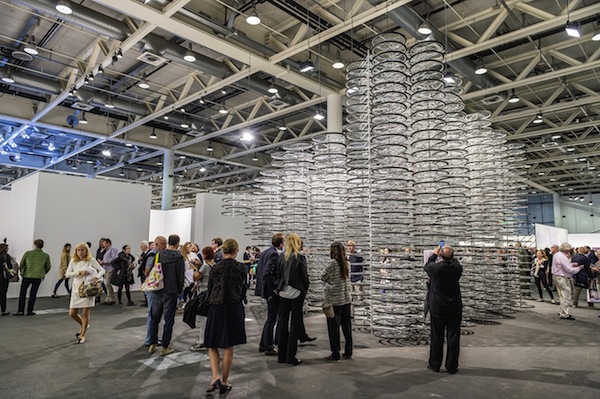
Ai Weiwei, Stacked (2012), Art Basel Unlimited 2015
Photo: Courtesy Art Basel
Egocentric System (2015) places the artist in the heart of, well, his own work, and renders him unable to engage with his surroundings. On preview day, von Bismarck was still there, in the exact same position and still on the phone, hours later.
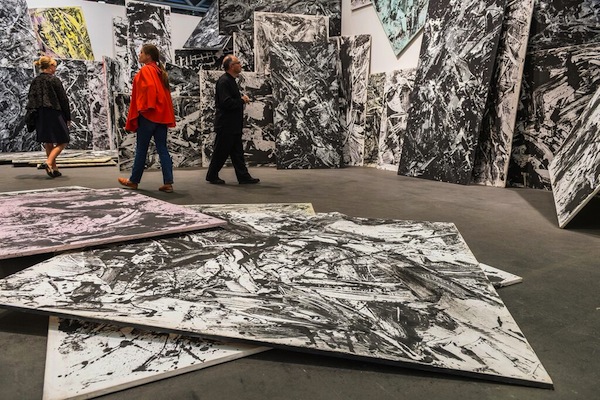
Emilio Vedova, …in continuum (1987/88), Art Basel Unlimited 2015
Photo: Courtesy Art Basel
The bowl is flanked by two monumental sculptures: Ai Weiwei’s Stacked (2012), featuring 760 connected bikes, and Jeppe Hein’s rotating angular mirrors. The effect of these three works combined is dizzying, and to offset the spectacle, enter Spencer Finch’s Light in an Empty Room (Studio at Night) (2015). The installation recreates the light coming in from the street and the play of shapes and colors on the walls of the artist’s Brooklyn studio at night. There’s even a projector on a small rail that moves back and forth to emulate the lights of passing trains.
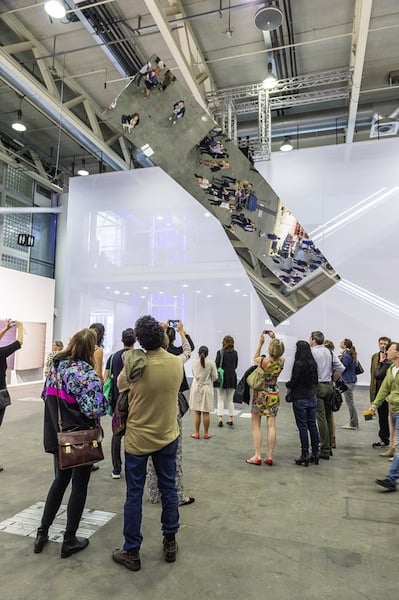
Jeppe Hein, 360º Illusion III (2007), Art Basel Unlimited 2015
Photo: Courtesy Art Basel
Leigh Ledare fills a large room with photographs, collages, and notes in Double Bind (2010-2012), a stirring work which boldly mines the messy psychosexual entanglement of an ex-husband (Ledare) with his ex-wife and her new partner.
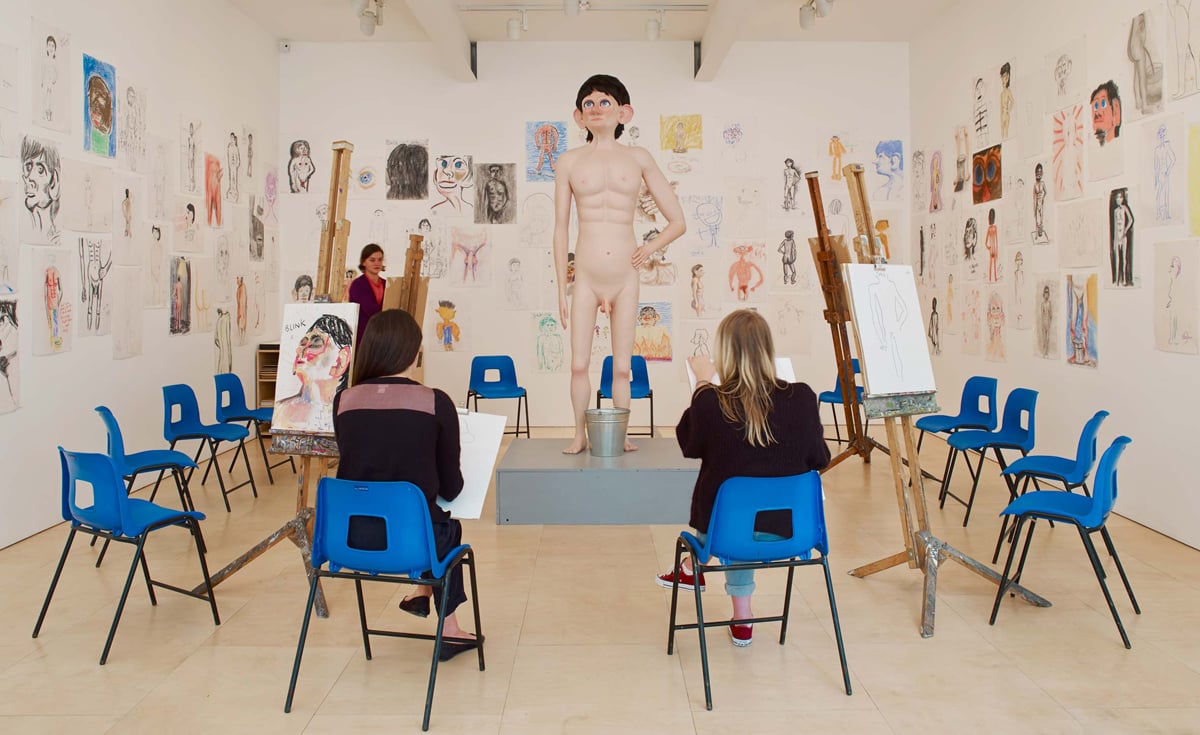
Installation view of ‘Life Model’ 2014 by David Shrigley.
© the artist. Courtesy the artist and Stephen Friedman Gallery, London. Photography Stephen White.
The comic relief comes courtesy of David Shrigley with the performance installation Life Model (2012), which features a sculpture of a bug-eyed, big-eared giant—nude and urinating into a bucket—set in a life class drawing room. Works created in the “class” hang on the walls, and anyone can participate.
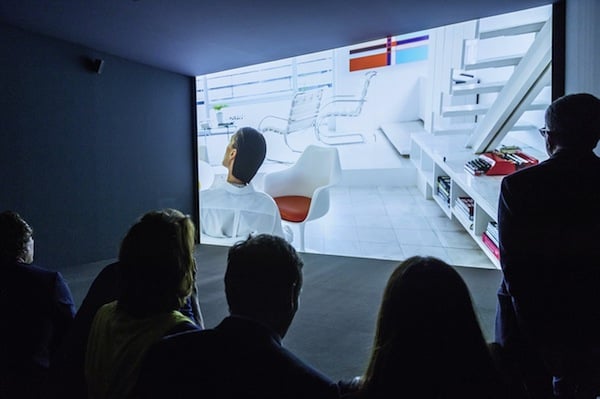
Anna Gaskell, Echo Morris (2015), Unlimited Art Basel 2015
Photo: Courtesy Art Basel
Anna Gaskell delivers another type of portraiture—and a more refined jest—in her video Echo Morris (2014). The film follows Sarah Morris on several shoots in different cities, at openings in London and New York, screenings in Chicago and Berlin, and editorial shoots in Morris’s sleek home. The film is made in the style of a Morris film, with the edits and music dictating a certain rhythm. It is a gesture and a caricature, an homage and a double entendre all in one. We learn that Morris wears black and white a lot, and that her work and home lend themselves beautifully to fashion spreads, usually featuring her.
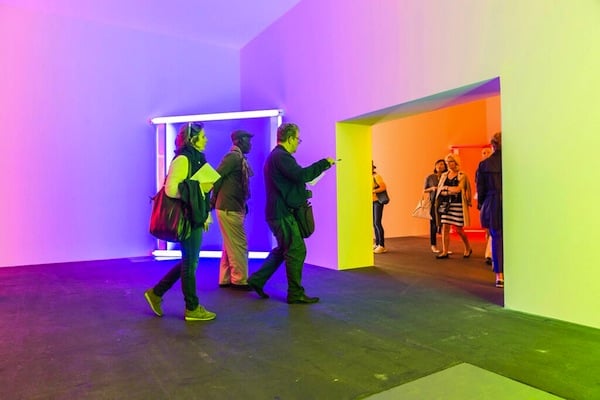
Dan Flavin, European Couples (1966-71), Unlimited in Basel
Photo: Courtesy Art Basel
The video is screened across the hall from Morris’s own video Strange Magic (2014), shot in Paris around the construction of the Fondation Louis Vuitton, designed by Frank Gehry (see As a Museum, Frank Gehry’s Fondation Louis Vuitton in Paris Disappoints).
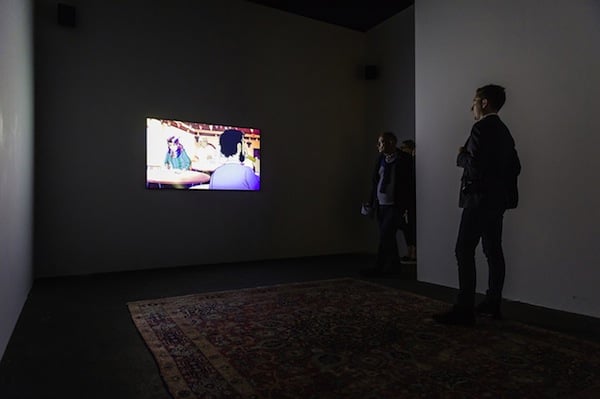
Darren Bader, To Be Titled (2015), Art Basel Unlimited 2015
Photo: Courtesy Art Basel
There are more video works not to be missed. Happy Soul (2014), by Sanya Kantarovsky, is a whimsical and poetic animation—his first—projected onto a painting of a nude man. Darren Bader’s The Vagrant chronicles the yet unwritten history of outer space sculpture, the calamities of such “public art” endeavours, a future Batman, and Debbie Harry.
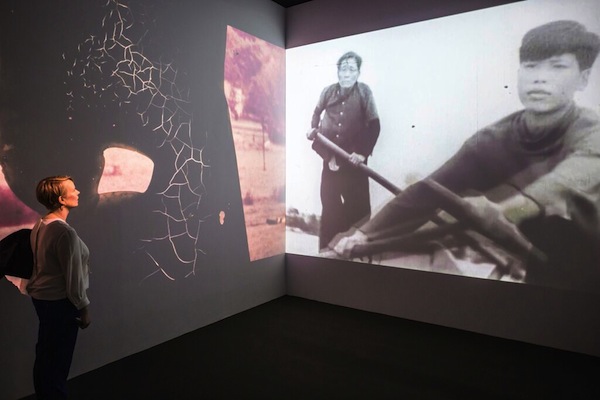
William E. Jones America, Hail Satan (2015), Unlimited in Basel 2015
Photo: Courtesy Art Basel
Video installations by Lorna Simpson and Wu Tsang are screened in adjacent rooms. The spatial vicinity and subject matters—though certainly unintended—evoke some interesting questions about the case of Rachel Dolezal, and the contested parallels and dissimilarities between being transgender and experiencing, for lack of a better word, race-dysmorphia (see Artist Rachel Dolezal Who Lied About Being Black Defends Her Art on the Today Show).
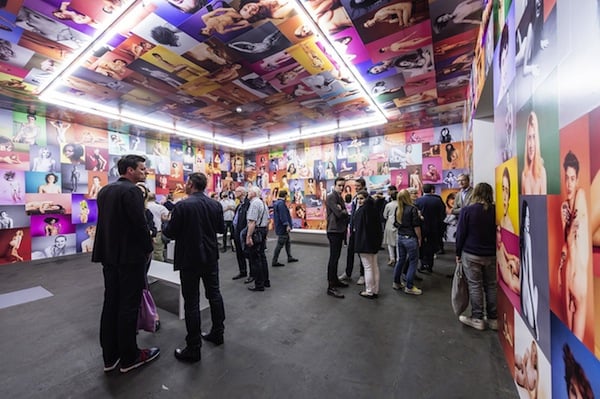
Ryan McGinley, YEARBOOK (2014), Art Basel Unlimited 2015
Photo: Courtesy Art Basel
Photography is also spotlighted. Ryan McGinley’s Yearbook covers the walls and ceiling with nude portraits of smiling youth shot against colorful studio backdrops, offering beauty and coolness in all shapes and sizes, though, as certain tattoos evidence, some of the counter- and subcultures his subjects represent are more dubious than others (see Major Ryan McGinley Exhibition Opens in the Netherlands).

Victor Burgin, Office at Night (1986), Art Basel Unlimited 2015
Photo: Courtesy Art Basel
Victor Burgin’s seminal series Office at Night (1986) is strikingly fresh. The images recreate Edward Hopper’s eponymous painting, casting female secretaries and male bosses in 80s office settings.
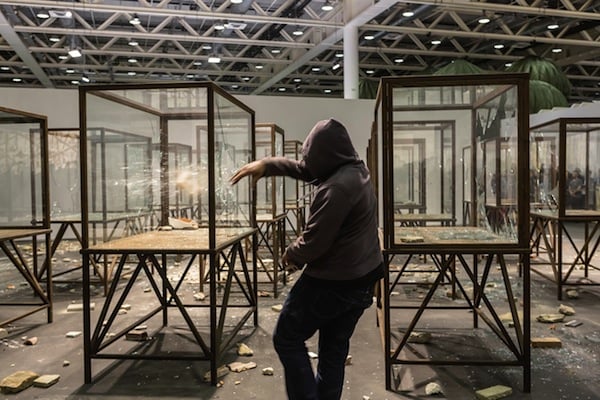
Kader Attia, Arab Spring (2014), Art Basel Unlimited 2015
Photo: Courtesy Art Basel
Kader Attia’s Arab Spring (2014) is a sculptural installation featuring the traces of a performance. During Monday’s preview, Attia reenacted the destruction of the Egypt museum in Cairo, smashing the glass display cases that are arranged around the space with bricks. The shattered glass and red bricks form the final work.

Jakub Julian Ziółkowski, Imagorea (2014), Unlimited in Basel 2015
Photo: Courtesy Art Basel
But, although often reviewed and discussed like an exhibition, Unlimited is not a show but an inseparable part of the fair, and works are sold directly from here.
Hauser & Wirth, for instance, sold all four projects by gallery artists in this sector, including works by Zhang Enli, Jakub Julian Ziolkowski, a video by Martin Creed, and an aquarium living sculpture by Pierre Huyghe that went to a private collection for €500,000.
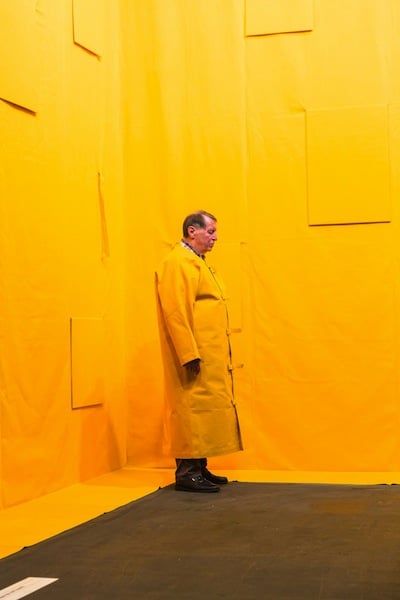
Franz Erhard Walther, Wallformation Gelbmodellierung (1980-81)
Photo: Courtesy Art Basel
For more Art Basel 2015 coverage see:
Art Basel Dealers Report Tsunami of Sales In First Few Hours – See What Sold
Art Basel Sales are Swift, with Rauschenberg and Kelley Going Fast